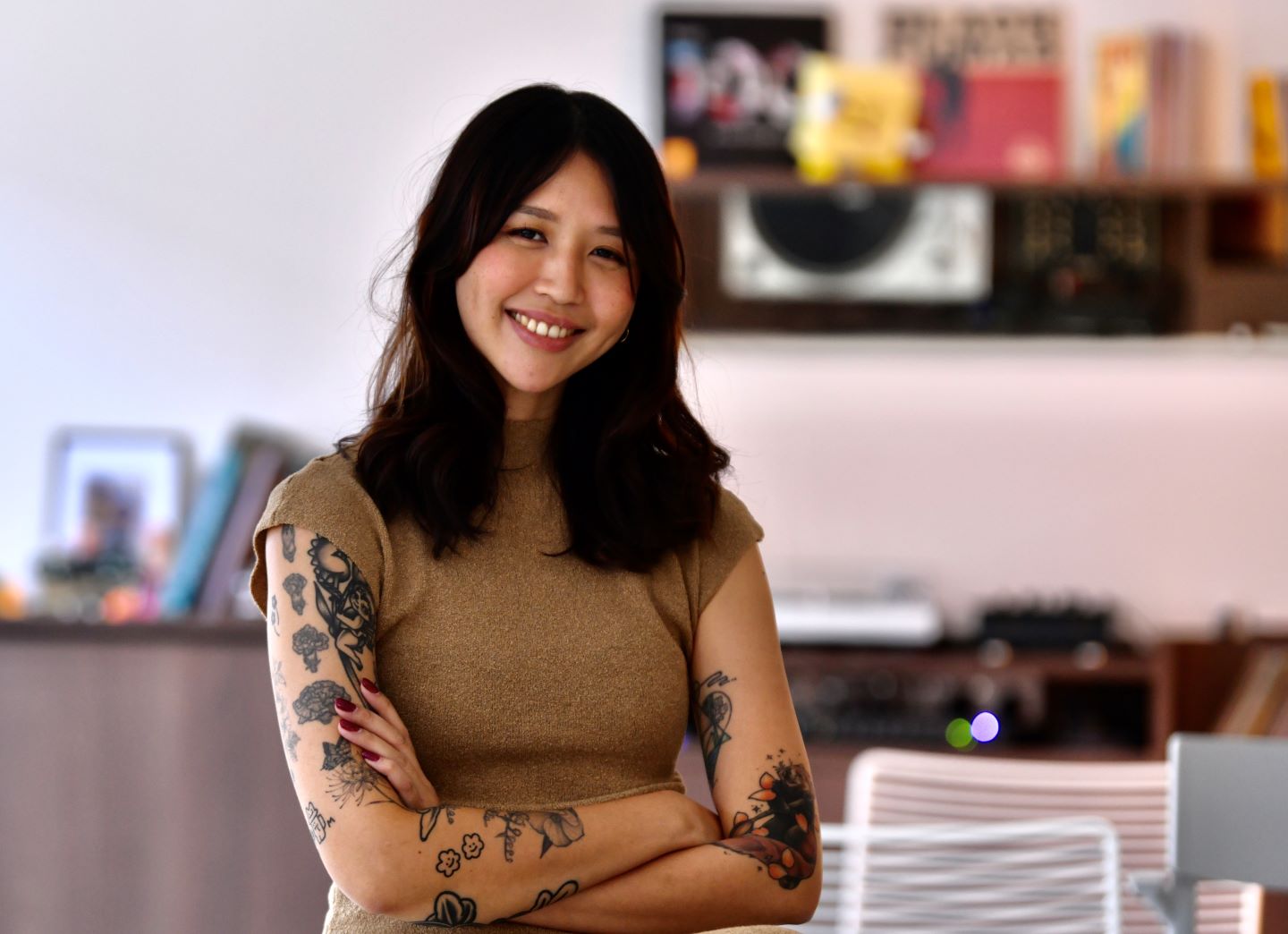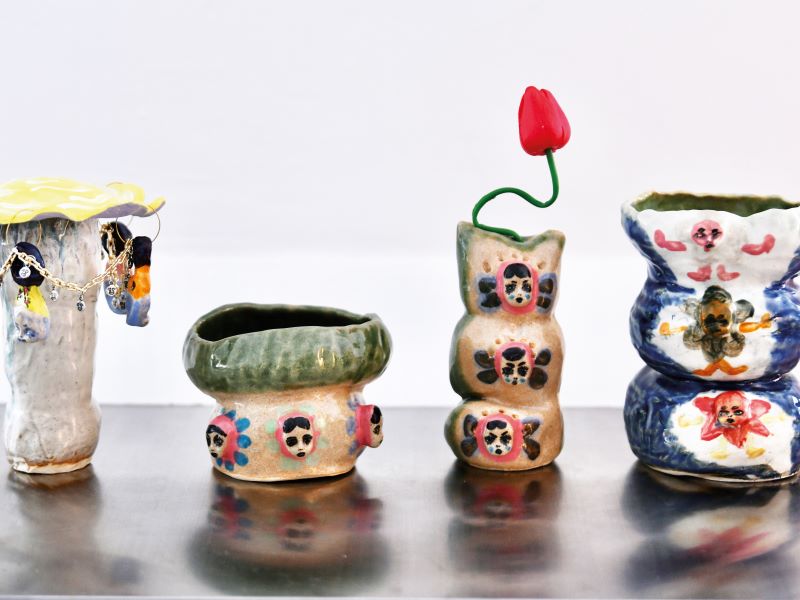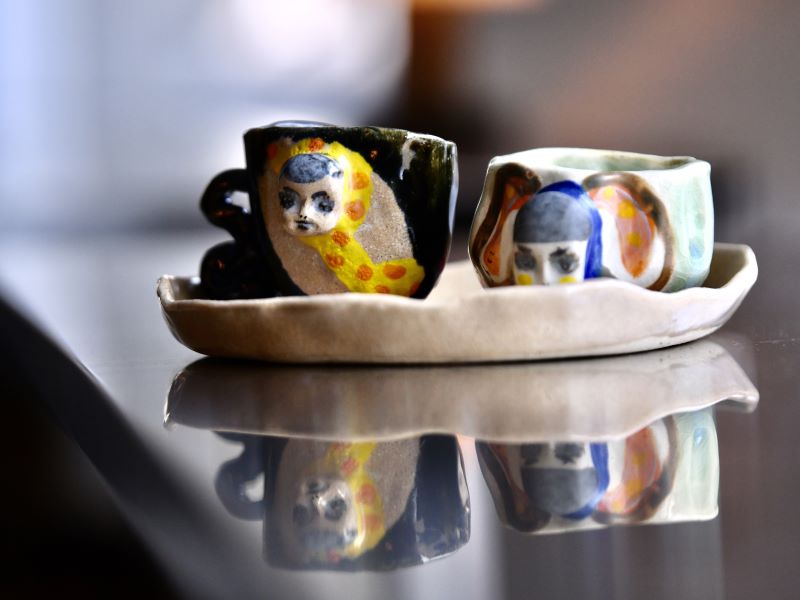
Art infuses all aspects of Hannah’s life, as seen in her sleeves of custom tattoos that she collects ‘like a sticker book’ (All photos: Sam Fong/The Edge)
In 2001, the first ever photorealistic computer-animated feature film Final Fantasy: The Spirits Within hit the silver screen. Based on the titular video game series, the feature held the record for most expensive animated production for nine years, and the budget showed in its cutting-edge hyper-realistic graphics. As impressive as this was in terms of technology, audiences left cinemas feeling uneasy. This was later identified as a symptom of the uncanny valley phenomenon, resulting from the humanoid yet bizarrely mechanical digitally rendered characters seen throughout the movie.
This psychological tingle, experienced primarily when witnessing human-like entities (typically robots, sculptures or animations) that are just shy of being lifelike enough for the brain to register as actual humans, evokes a range of strange emotions, from curiosity to even repulsion. However, there is a unique sense of beauty and awe to be acknowledged here. It is exactly this appreciation for the eldritch and extraordinary in the natural and manmade worlds that Sabahan ceramicist Hannah Bhatt celebrates with her pottery label, The Uncanny Valley Studios.
The skill and desire to go against the grain comes naturally to Hannah, who had a keenness for experimenting since young. “Growing up, I’ve always loved working with my hands,” she explains. “I love painting and after, I like to stick things on. For art projects in school, I used to break glass bottles and use the pieces to make something. I like to mix things up and with ceramics, I am able to do that.”
Uncanny Valley is by no means Hannah’s first foray into the world of indie entrepreneurship. In 2015, she and her husband Samuel Chew launched their own line of wearables, The Covert Collective (TCC). Born out of Hannah’s creativity and Samuel’s love for streetwear, the brand specialised in graphic T-shirts with funky prints that paid homage to the bold, defined lines of Americana tattoos.
Hannah’s flair for creating unexpected visuals is applied to TCC’s designs, one of the first being “a fish with legs”. This early sketch still has relevance to her today and her identity as an artist. “I really resonated with it because I have always felt like a fish out of water, and I think a lot of artists feel that way too. So I thought, ‘Okay, I like this. Let’s make this my thing!’” she comments.
20230929_peo_hannah_bhatt_3_sam.jpg

Over the course of four years, TCC attracted a faithful crowd of followers for its niche and fun aesthetic. However, all good things must come to an end. Following their marriage in 2017 and the birth of their first child a year later, Hannah and Samuel realised how much their direction in life had shifted, as had their priorities, since starting their business in their early twenties. Choosing to channel their time and energy into their young family and more pressing pursuits, they made the difficult decision to close TCC in 2019.
But when one door closes, another opens. Now a mother of two, Hannah found herself with free time on her hands when her children went off to school. “I have about four hours to myself in the morning now,” she says. “Rather than just catching up on sleep, I decided to learn something new and keep my days productive.”
Her hobby of choice was pottery. Enter Clay Expression, the Subang pottery studio where Hannah took morning handbuilding lessons. “I took one course, then another and more after that,” she muses. “I think I’ve taken all their classes.”
With this versatile medium, Hannah created fantastical sculptures. One such piece she still owns — a candelabra with Kafkaesque tentacles wrapped around the main body — even has her name etched on the bottom, a reminder of her student days. Many of her other creations were gifted to friends and family, who urged her to start selling her work.
Now known best for asymmetrical hand-painted ceramics with quaint little visages and hands emerging from the surface, Uncanny Valley’s ceramics are nothing like the minimalist, neutral-toned pots and bowls found in your typical shopping mall home goods store. From a face at the bottom of a mini soup bowl to curvaceous vases with bright glaze finishes, there is no shortage of details to catch the eye when it comes to her work. So it was no surprise when Adeline Chong, founder and creative director of Snackfood, an artisanal gift store in Kuala Lumpur, slid into Hannah’s Instagram DMs and offered the artist an exclusive platform to display and sell her work.
Just a month after their first meeting, Hannah held her very first exhibition at Snackfood’s Pantai Hillpark space. Titled Fantasy and Fantastic, the showcase presented 50 original handcrafted pieces. By the end of the presentation, 60% of the items had been sold to decorate new homes across the city. “The exhibition with Snackfood has definitely been one of the greatest highlights so far,” says Hannah, who plans to seek out similar opportunities both locally and internationally.
20230929_peo_hannah_bhatt_2_sam.jpg

You might be thinking, “What could possibly inspire one to make art so extraordinary?” Hannah’s ideas often come from “just life” and the hidden whimsy that we encounter each day in our surroundings and interactions. To her, simple objects can always be envisioned differently from how we typically see them, which also enables her work to have a multipurpose aspect and “be used however you want to”, regardless of their labelled name or function.
When it comes to established figures, she looks to the likes of Tim Burton and Junji Ito, who many might argue are the fathers of outré, creepy art. It is perhaps true that sipping on the final dregs of a beverage to reveal a haunting face staring up at you from the cup floor can be a somewhat grotesque experience, but as the artist says, “Some also see beauty in it. When people look at my work, they say, ‘You know what? This is really weird and it is a little dark, but there’s something appealing about it’, and I think that’s what my stuff is about — finding beauty in the unconventional.”
Most importantly, as she continues to mould eccentric pieces (lamps and mirrors are among items in the works), she finds it key to create with intention and imbue each lump of clay with stories and messages that buyers feel connected to. After all, what is art for if not to make you feel something?
“You don’t really see these kinds of pieces around here [in Malaysia], and in a way, I wanted people to relate to that uniqueness. I’ve had a lot of amazing customers with really different personalities and they tell me [my ceramics] bring them joy. It gives me comfort I can make them feel that way about art.”
This article first appeared on Oct 16, 2023 in The Edge Malaysia.


